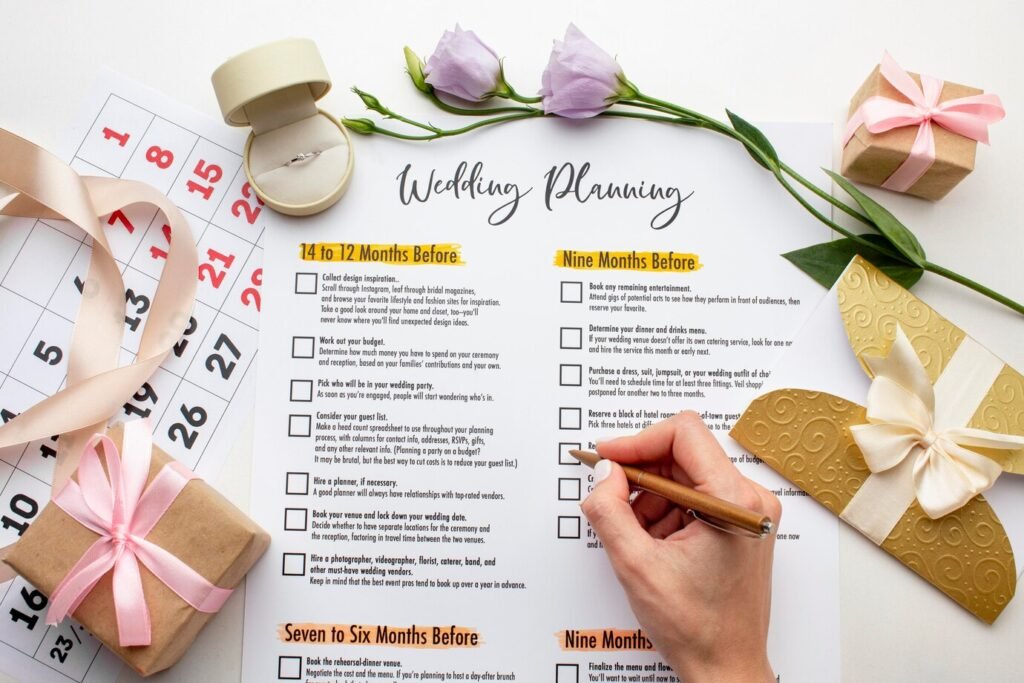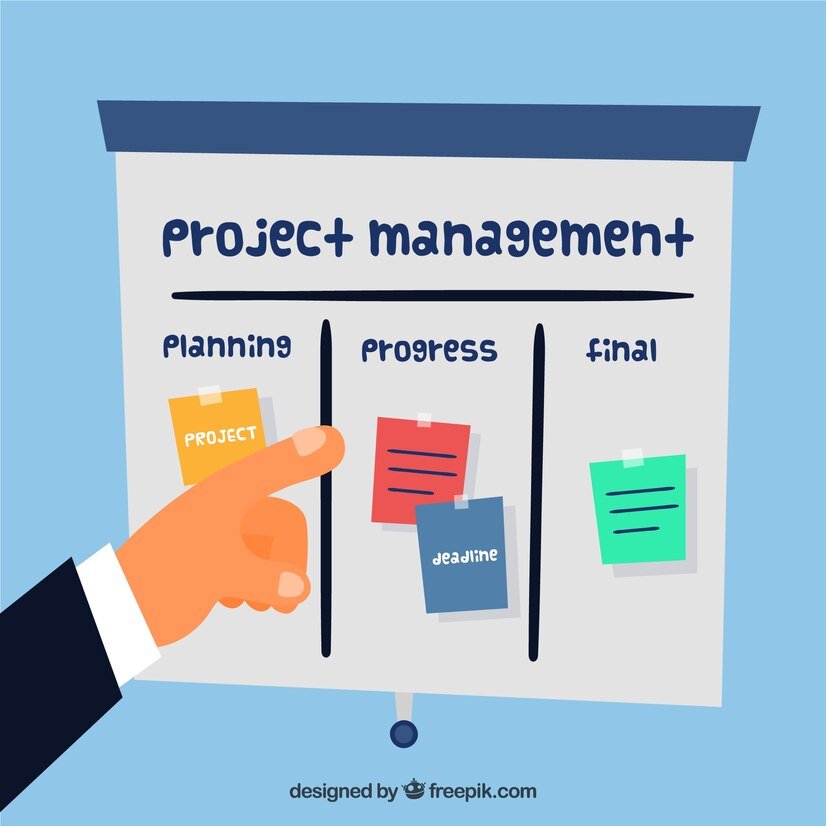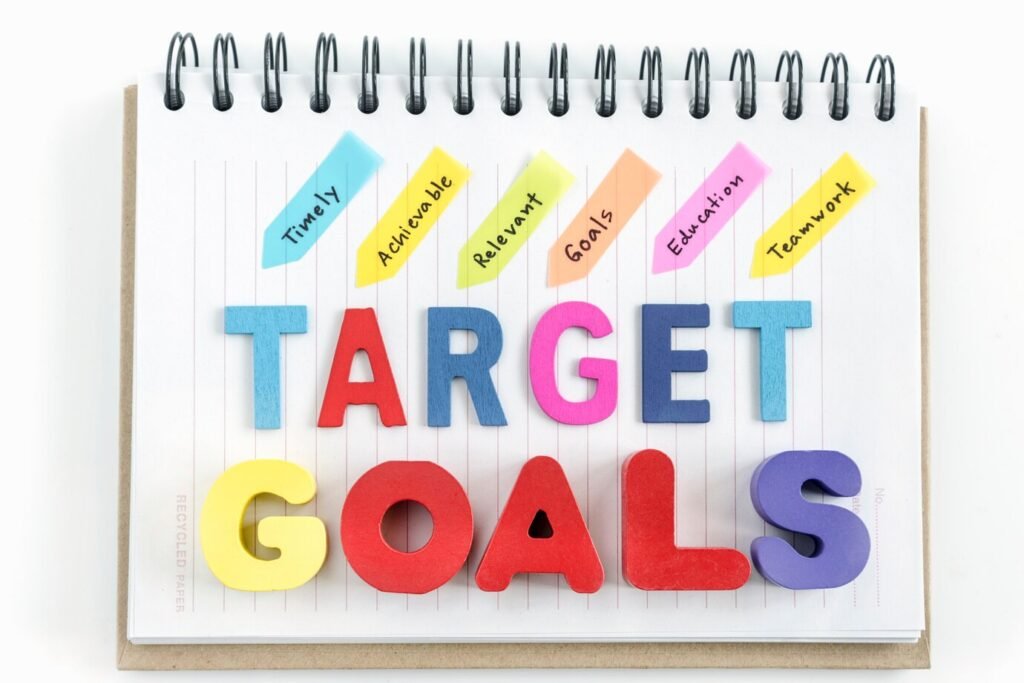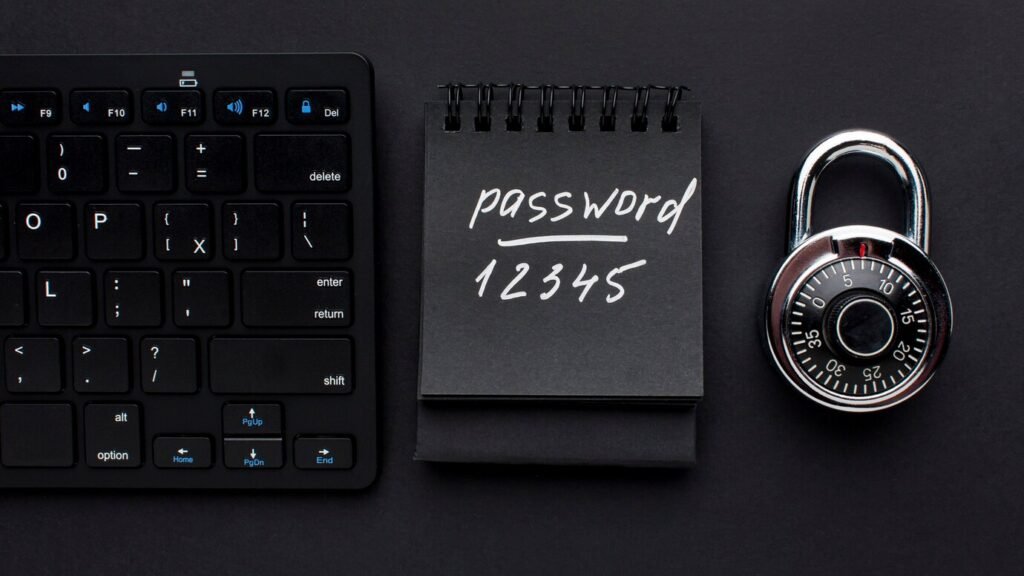
The wisdom of lists exposes your path to organization through 20 specific action items that restore control over your life.
Life in today’s fast-paced world often causes people to feel perpetually disorganized as an ongoing struggle they must endure.
The combination of accumulating papers with approaching deadlines produces a lasting sense of being unable to stay on top of your responsibilities.
The path to controlling chaos and finding peace involves a basic approach rather than an elaborate procedure.
A simple set of items, such as lists, holds the solution to arranging chaos.
Lists. We create lists to remember groceries and errands together with our yearly holiday present selections.
Their influence goes well beyond fundamental organizational tasks.
The strategic use of lists will turn you into a beacon of efficiency and control by turning your organizational chaos into orderly systems.
Not just writing a few fast bullets before going shopping defines the essence of this principle.
Creating an extensive list-based system is essential to organize and track every element of your lifestyle, which includes email management and future goal development.
This guide examines 20 fundamental list formats that create organized systems to assist both your organization and long-term structured maintenance.
The purpose of decluttering goes beyond physical order because it frees your mind while freeing up energy and enabling proactive decision-making in your life.
The mainin function of lists is to serve as a trustworthy memory space that protects your tasks and ideas from mental clutter.
This article will explore these 20 transformative lists in detail.
The upcoming discussion will explain the essential nature of each list as we break down what should go inside them along with methods to maximize their effectiveness for maintaining a tidy and productive lifestyle, which produces inner calm.
You now have the opportunity to harness the transformative potential of lists, which will reshape your life as you create each carefully designed one.
The 20 Lists to Get Organized and Stay Organized:
The following section introduces our core discussion about the 20 essential lists you need to optimize your organizational routines.
The various lists complement each other, although they exist as separate categories because combining them maximizes their effectiveness.
I. Lists for daily and weekly organization
Your daily and weekly anchors are organizational lists that help you complete tasks while following your routine consistently.
1. The Daily To-Do List

• Purpose: The cornerstone of dailproductivity. A comprehensive list gathers all assignments and jobs that require finishing today.
• What to Include:
Urgent tasks: deadlines, appointments, and time-sensitive activities.
Activities that direct progress toward your future objectives belong to this category.
Start each day with routines that include daily practices, such as exercise and Personal Errands: Grocery shopping, dry cleaning, etc.
• How to Use It:
Please consider preparing it the night before or at the start of the morning.
The implementation of numbered lists or visual color codes functions as a system for task prioritization.
Review it throughout the day.
When you put pen to paper, you create a physical marker of accomplishment when you cross off tasks.
2. The Weekly Master Task List

The weekly master task list gives you an expanded view of all week-long tasks so you can understand daily responsibilities better.
• What to Include:
A comprehensive overview regarding everything you need to accomplish throughout the week must appear on this list.
Recurring activities, including weekly conferences and laundry maintenance, form part of this list.
Transform larger projects into weekly achievable steps.
• How to Use It:
Create it at the start of each week (Sunday evening or Monday morning).
In the weekly list, it functions as your primary source for delivering content to daily to-do lists.
Regular weekly reviews are necessary to confirm the progress of important tasks.
The weekly checklist requires periodic adjustments during the week.
3. The Daily Routine Checklist
The purpose of this tool is to set and sustain steady daily patterns that become consistent habits.
• What to Include:
Your morning starts with wake-up hours, followed by hydration needs, workout time, breakfast, and meditation sessions.
Each evening includes dinner as well as cleaning tasks while preparing for tomorrow with time set for relaxation before going to bed.
Midday Routine (optional): Lunch break activities, mindfulness breaks, etc.
• How to Use It:
Create checklists for morning and evening routines.
Visually track your adherence to your routines.
This tool helps establish routines, which enable you to develop enduring healthy practices.
Test your routines for optimal day improvement.
4. The Weekly Review Checklist
The purpose of this system is to monitor your development while finding improvement opportunities and creating a weekly action plan.
• What to Include:
The review examines accomplishments from the previous week and reviews challenges encountered during that period.
Review elements that functioned effectively alongside identifying potential areas for development.
Please review your master weekly task list for updates and ensure it is maintained.
Plan for the upcoming week’s priorities.
Kindly review your upcoming appointment bookings and pending deadlines on your calendar.
• How to Use It:
Schedule a dedicated time each week for your review (e.g., Friday afternoon or Sunday morning).
With the help of a checklist, your review process follows a systematic path.
o Document your reflections and insights for future reference.
II. Lists for Project and Goal Management
These lists provide a method to make large projects easier to manage while delivering clarity and structure for achieving long-term goals.
5. The Project Breakdown List

This tool enables you to optimize large, challenging projects through approachable, smaller, actionable steps.
• What to Include:
All tasks that make up a project must be included.
The procedure involves dividing tasks into miniaturized actionable steps.
The tasks should follow a logical sequence when possible in their presentation order.
You can optionally add supplementary information to each task, such as estimated timing and required resources.
• How to Use It:
Create a project breakdown list for any project, big or small.
Begin by writing down every task within the project.
Organize tasks logically and sequentially.
Please add each individual task to your designated weekly or daily to-do lists.
6. The Goal Setting List

The goal-setting list helps you define your aspirations while offering a pathway to reach them.
• What to Include:
Establish short-term goals, such as within the next month.
Establish mid-term goals, such as within the next year.
Establish long-term goals (e.g., 5-10 years and beyond).
I have set goals in different areas of life (career, health, relationships, and personal development).
Large goals require transformation into smaller, actionable steps for effective progress.
• How to Use It:
Brainstorm your goals across different life areas.
Write down your goals clearly and specifically.
The regular evaluation of your goals will help you remain focused on your progress toward success.
Large goals require segmentation into individual projects, which become specific tasks recorded through the project breakdown list.
7. The “Someday/Maybe” List

This list serves to accommodate ideas together with aspirations and tasks that demand future attention while currently maintaining a non-urgent status.
• What to Include:
Your future enjoyment requires a list of recommended books, movies, and travel destinations.
The list includes necessary courses and learning opportunities with expandable hobby options.
Describe the tasks you plan to start working on after completing your current projects.
The list contains upcoming thoughts you wish to look at again.
• How to Use It:
Use it as a catch-all for non-urgent items.
Regular review of your project notebook allows you to transfer items that have become urgent tasks to your active list.
Using this strategy ensures that valuable ideas stay retrievable.
III. Lists for Home and Personal Space Organization
Organizing the items into lists helps establish order in your physical space, which improves both functionality and the peace of mind for your living space.
8. The Decluttering Checklist

• Purpose: Systematically declutters your home, room by room or area by area.
• What to Include:
There are areas to declutter, such as kitchen drawers, closet shelves, and office desks.
There are various categories of items to declutter, such as clothes, papers, and kitchen gadgets.
The steps include sorting, purging, organizing, and maintaining items as part of your decluttering process.
Users should focus their decluttering efforts on particular zones like “Master Bedroom—Dresser Drawers” and “Living Room—Bookshelves” in each respective room.
• How to Use It:
Organize your decluttering operations into small segments that fit your schedule.
You can follow the checklist to mark your progress section by section.
Establish practical durations to eliminate clutter from different sections of the house.
You should celebrate your progress by marking off completed areas of the checklist.
9. The Home Inventory List
• Purpose: Keeps track of important household items, their location, and relevant information (warranty, purchase date, etc.).
• What to Include:
The checklist contains major home appliances such as refrigerators and washing machines, among other items.
I am interested in electronics such as TVs and computers.
The collection includes valuable items such as jewelry and artwork.
Find the location of important documents such as insurance policies and passports.
The checklist includes technical specifications, warranty information, purchase dates, and model numbers for each item.
• How to Use It:
Create a comprehensive inventory of your home’s contents.
Maintain a current inventory by updating it every time you get new possessions or get rid of existing items.
Building a detailed home inventory serves multiple functions, including insurance coverage and property relocation needs as well as personal ownership monitoring.
10. The Cleaning Schedule Checklist

The checklist functions as a tool to develop systematic cleaning routines for maintaining house cleanliness.
• What to Include:
The list includes regular maintenance duties, which involve daily bedmaking and countertop wiping.
The checklist includes daily cleaning tasks like bedmaking and surface wiping, as well as weekly tasks like vacuuming and mopping, along with bathroom cleaning duties.
You should perform deep cleaning activities and maintain your appliances as part of your monthly cleaning repertoire.
Each room requires its set of specific cleaning steps, including “Clean Oven in the Kitchen” alongside “Scrub Shower in the Bathroom.”
• How to Use It:
You should develop a cleaning regimen aligned with your lifestyle and requirements.
The schedule should divide cleaning responsibilities according to daily, weekly, and monthly intervals.
The checklist serves as a tool for confirming regular completion of all tasks.
Safety comes first, as you will benefit from spacing out different cleaning tasks during the week.
11. The Packing List

The packing list serves as a tool that prevents you from leaving essential items behind when traveling.
• What to Include:
Home and away packing lists contain clothing items according to weather conditions and the length of your journey.
We are in need of toiletries and personal care items.
There are electronics and chargers available.
The travel documents include a passport, tickets, and reservations.
I have medications and a first-aid kit with me.
Private items should also include destination-specific products, including swimwear along with hiking boots.
• How to Use It:
You should develop a template packing list that functions as a starting point for each new adventure.
Create packing efforts a couple of days before your scheduled departure.
The packing list contains a system for checking off items once you put them inside the bag.
Before departure, confirm that all necessary objects are included on the list.
IV. Lists for Digital and Information Organization
Such checklists provide digital organization by controlling disorganized information and making it easily accessible.
12. The Digital Decluttering List
This list helps you perform scheduled maintenance on digital files and online folders as well as on all digital accounts.
• What to Include:
You can store files and folders on your computer and in cloud storage.
Your inbox, along with all sent emails, should be included in this list.
There are unused apps and software.
This includes browser bookmarks and browser history.
I have social media accounts and connections.
• How to Use It:
Schedule regular digital decluttering sessions.
You should follow the system to tackle all items listed in order.
The elimination of unneeded files, removal of unwanted email subscriptions, and deletion of unused application programs should be performed. We need to organize the remaining documents into logical file groups.
groups.
13. The Password Management List

The password management list maintains your secure password information in a systematic way using password manager software.
• What to Include:
The website or application name is required.
Please provide your username or email address.
The list includes the website name as well as the email address and password, which are secured within a password manager but never appear handwritten.
Storage of security questions and answers takes place securely in addition to the other informational items.
Include the account-related notes and reminders.
• How to Use It:
Choose a reputable password manager tool.
Generate strong, unique passwords for each account.
Store all your passwords securely in your password manager.
Regularly update your passwords and security information.
14. The Contacts List

• Purpose: Organizes your personal and professional contacts for easy access and communication.
• What to Include:
Name (first and last).
Phone number(s).
Email address(es).
The physical address is optional.
Keep track of important details such as relationships and birthdays.
The categories include family, friends, colleagues, clients, etc.
• How to Use It:
A digital contact management app, along with a spreadsheet application, allows users to track their personal contacts effectively.
Maintain an accurate, updated contacts list that reflects the correct information.
You should create groupings of contacts so your filtering system and communication system operate more efficiently.
You should make a habit of backing up the information in your contact list.
15. The Reading List
The reading list serves to collect the book titles alongside authors, along with articles and materials that you want to read.
• What to Include:
The list includes book titles and authors.
We provide the article titles and sources.
The reading list must include websites together with blog posts that you want to read.
The categories include fiction, non-fiction, and professional development, among others.
Notes or reminders describing the motivation behind every reading material appear among other fields.
• How to Use It:
Create a reading list digitally or physically.
Your reading list grows bigger through the addition of new materials once you come across them.
Arrange items in your reading list according to personal areas of interest and the achievements you wish to reach.
You should monitor your reading advancement together with note-keeping activities.
V. Lists for Self-Care and Wellbeing
Such lists function as essential tools that promote your personal wellness during hectic times.
16. The Self-Care Ideas List

The self-care ideas list function acts as a ready resource for activities that help you care for yourself and relieve stress.
• What to Include:
You will find relaxing activities, including bathing, meditation, reading, and music listening, on this list.
The list contains experiences that include exercise together with yoga and walking in natural settings.
The list includes drawing and writing as well as music performance as creative activities.
Social care involves interaction with dear friends as well as quality time spent with close family members.
Mindfulness practices (deep breathing, journaling).
• How to Use It:
Identify several activities that provide relaxation and rejuvenation to your body through brainstorming exercises.
Create a strategy that includes instant access to self-care activities.
The list serves as a reference point for you to use during stressful, overwhelming, or fatigued moments.
Develop a consistent plan to incorporate self-care activities daily or weekly.
17. The Gratitude List
The purpose of forming a gratitude list is to create a positive outlook while recognizing all the beneficial aspects of your life.
• What to Include:
Your gratitude list will include daily appreciation of valuable aspects, no matter how small.
There are people for whom you are grateful.
Experiences you are grateful for.
There are opportunities for which you are grateful.
The qualities within yourself lead the list of what you treasure most.
• How to Use It:
Create a daily or weekly gratitude list.
Please create a list of 3 to 5 items you are grateful for each time you write.
Referring to your gratitude list frequently allows you to improve your mood and view life in a positive way.
You should share your expressions of gratitude with others to build stronger relationships.
18. The Meal Planning List

The purpose of meal planning consists of saving time while minimizing food waste and enabling you to consume healthily.
• What to Include:
There are breakfast, lunch, and dinner ideas for each day of the week.
There will be snacks and drinks available.
Ingredients are needed for each meal.
Take into account dietary considerations such as vegetarianism and gluten-free options.
• How to Use It:
Plan your meals weekly, considering your schedule and preferences.
Create a meal plan list and a corresponding grocery shopping list.
Following your planned meals will stop both desired and unhealthy purchasing behavior.
Daily changes in availability and preferences should guide your modifications to the dietary plan.
VI. Lists for Personal Growth and Development:
Self-assessment and learning occur through these lists since they promote personal advancement.
19. The Skills to Learn List

The Skills to Learn List helps you record desired skills for their recording, enabling ongoing personal development throughout your life.
• What to Include:
I possess professional skills in coding, public speaking, and project management.
The list includes creative aptitudes where one can practice painting, authorship, and instrument performance.
The list consists of three divisions: home improvement expertise, practical competencies, and creative abilities (cooking and gardening as well as home maintenance).
Soft skills include communication, leadership, and emotional intelligence.
• How to Use It:
Create a list with skills you wish to learn or develop through brainstorming.
Start by generating a skills list for learning, after which you should prioritize the items.
For educational purposes, it is necessary to divide each skill into smaller learning segments or projects.
Use monitoring tools to follow your skill development and reward yourself when you achieve new learning achievements.
20. The Lessons Learned List
The Lessons Learned List helps you review experience outcomes and grows both your self-understanding and individual growth.
• What to Include:
You learn important life lessons from both achieving and not achieving your objectives.
You discover important information about yourself when you face difficult situations and problems.
I have identified key takeaways from books, courses, or conversations.
Reflections on personal growth and development.
You will develop clear actions based on the information you gained from your experiences.
• How to Use It:
Practice self-examination of life experiences to discover useful knowledge.
Make an official collection of lessons you have learned through handwriting or digital entry.
Regularly review your lessons list to help you remember important findings about life.
Regularly use your wisdom in new situations to make smarter choices and enhance your way of living.
Transforming Your List System into Effective Results
After making the lists, you should move into actual usage. Your lists gain maximum benefit when you do them right. Here are some key tips:
Pick the tool you want to use, which can be physical (notes, index cards) or digital (apps, digital documents).
You should stick with the method that ensures you keep using it regularly.
Position your lists in spots that you can access at all times. Digital lists appear on both your phone and computer screens, while physical lists need to stay in your planner or visible areas.
Describe your list items in explicit terms to create useful tasks. Instead of “clean house,” write “vacuum living room,” “dust furniture,” and “clean bathroom sinks.”
First, identify essential tasks on your lists by placing them at the top of them. Shift work responsibilities to others to reduce your workload.
Lists stay productive only through ongoing updates. Regular monitoring helps you keep your lists effective, depending on your list type.
Try various list designs and styles until you find your ideal system.
Keep updating your list system as you need to so it continuously helps your progress.
Praise your achievements as you complete items from your lists.
Regularly rewarding yourself with this technique will drive you to keep using lists throughout your daily life.
The Takeaway: Lists as a Pathway to Empowerment
Lists provide a direct way for individuals to become more efficient and take authority over their lives. They offer order during disorder by defining uncertain situations.
Using these 20 top-rated lists will make you go from feeling stuck to feeling purposeful and skillfully led in your daily life.
Choose several lists that appeal to you first and create your list system step by step.
The basic yet effective tools of lists will deliver impressive results in your ability to work better and feel more peaceful.
Using lists helps you take charge of your life through focused thinking and completed tasks.